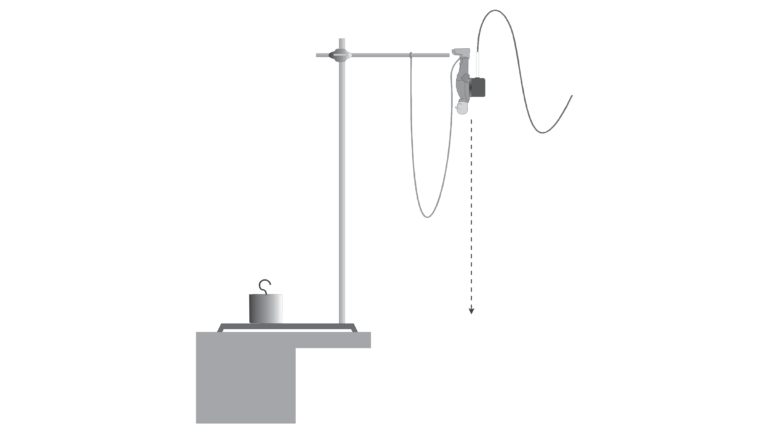
Introduction
In this experiment, you will investigate the accelerations that occur during a bungee jump. The graph below records the acceleration vs. time for an actual bungee jump, where the jumper jumped straight upward, then fell vertically downward. The positive direction on the graph is upward.
For about the first 2 seconds, the jumper stands on the platform in preparation for the jump. At this point the acceleration is 0 m/s2. In the next short period of time, the jumper dips downward then pushes upward, both accelerations showing up on the graph. Between about 2.5 seconds and 4.5 seconds, the jumper is freely falling and the acceleration is near –9.8 m/s2.
When all of the slack is out of the bungee cord, the acceleration begins to change. As the bungee cord stretches, it exerts an upward force on the jumper. Eventually the acceleration is upward although the jumper is still falling. A maximum positive acceleration corresponds to the bungee cord being extended to its maximum.
In your experiment, a block of wood or a toy doll will substitute for the jumper, and a rubber band will substitute for the bungee cord. An accelerometer connected to the “jumper” will be used to monitor the accelerations.
Objectives
- Use an accelerometer to analyze the motion of a bungee jumper from just prior to the jump through a few oscillations after the jump.
- Determine where in the motion the acceleration is at a maximum and at a minimum.
- Compare the laboratory jump with an actual bungee jump.
Sensors and Equipment
This experiment features the following sensors and equipment. Additional equipment may be required.
Option 1

Option 2

Ready to Experiment?
Ask an Expert
Get answers to your questions about how to teach this experiment with our support team.
- Call toll-free: 888-837-6437
- Chat with Us
- Email support@vernier.com
Purchase the Lab Book
This experiment is #7 of Physics with Vernier. The experiment in the book includes student instructions as well as instructor information for set up, helpful hints, and sample graphs and data.


